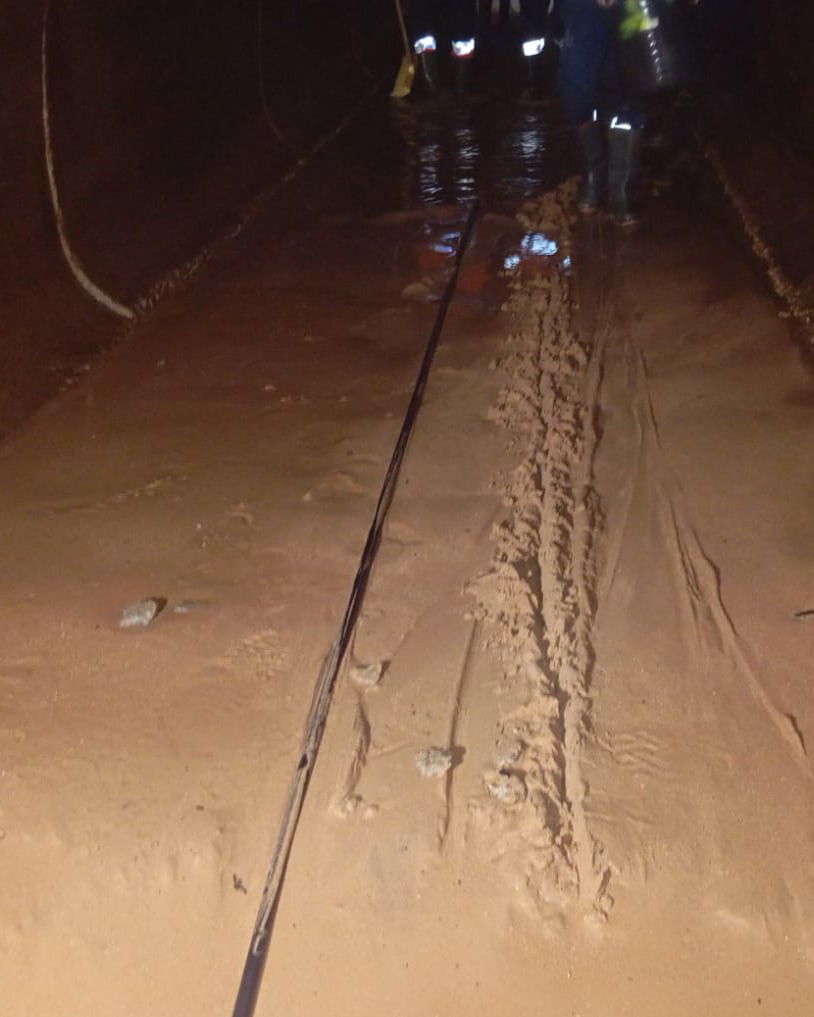Water contamination in the Region of Murcia Image: Shutterstock/Noel V. Baebler
The Region of Murcia continues to deal with the aftermath of the heavy rainfall caused by DANA Alice, which has severely disrupted water supplies across parts of the Costa Cálida. Over 100,000 residents in San Javier, San Pedro del Pinatar, and Los Alcázares have been affected by contaminated water, forcing authorities to impose precautionary restrictions. Here’s an in-depth look at what happened, the current situation, and ongoing recovery efforts.
How floods contaminated the water supply
After days of heavy rain, flash floods swept through the Campo de Cartagena, damaging roads, homes, and local infrastructure. According to the Mancomunidad de los Canales del Taibilla (MCT), runoff water from these floods entered the water distribution channels, reducing water quality. This contamination triggered an immediate ban on using tap water for drinking, cooking, and hygiene purposes.
The contamination affected not only the three main towns but also the surrounding areas in Torre Pacheco. Authorities confirmed that the water had high turbidity and low chlorine levels due to sediment and mud, but tests so far have not detected harmful bacteria such as E.coli or enterococci.
Partial restoration of water for non-drinking use
Recently, the MCT reactivated the supply of non-potable water to the El Mirador reservoir, a key point in the regional network. Before this, residents in some areas had experienced a complete water cut lasting between 24 and 36 hours, depending on the location, at a key point in the regional network. This allows residents in San Javier, San Pedro del Pinatar, and Los Alcázares to use water for flushing toilets, cleaning floors, filling cisterns, and other non-consumption tasks.
To minimise inconvenience, authorities have arranged an intermittent water supply for affected areas. Residents in some areas could access water for 12 hours per day, decreasing to 8 hours daily as cleaning efforts continue. This interim solution also extends to parts of Torre Pacheco and Murcia downstream of El Mirador.
However, not all areas have benefited from the partial restoration. Residents in San Cayetano report that they have had no mains water of any kind since Saturday, October 11, and are surviving with limited water collected from a tanker.
Ongoing cleaning and safety measures
The MCT is conducting 24-hour cleaning and disinfection of the affected water channels. Technicians are working under challenging conditions due to narrow canals, low oxygen levels, and the presence of chlorine. Authorities stress that while the water is temporarily available for non-drinking use, it is still unsafe for human consumption until further notice.
Multiple water quality analyses confirm no presence of dangerous contaminants, although sediment levels and low chlorine have made the water unsafe. The incident is being closely monitored according to the standards established in Spain’s Real Decreto 3/2023 for water quality.

Local response and public support
Local councils have worked quickly to provide safe drinking water. In San Pedro del Pinatar, distribution points and water trucks are operating at the Recinto Ferial, Lo Pagán, and El Mojón. Vulnerable residents receive direct assistance from Protección Civil.
Los Alcázares has set up water tanks at the Town Hall and Miguel de Cervantes Square, while supermarkets and shops ensure bottled water remains available. San Javier provides water in Santiago de la Ribera, El Mirador, Roda, and La Manga del Mar Menor. Showers and hygiene facilities have also been opened for residents unable to access clean water at home.
Political concerns
The situation has drawn criticism from local politicians. Joaquín Segado, spokesperson for the Partido Popular in the Regional Assembly, argued on his X account that the central government failed to provide timely support and warned that prolonged water shortages affect residents’ wellbeing, businesses, schools, and healthcare centres.
“The top official in Pedro Sánchez’s government is more focused on creating controversy than solving problems. 100,000 people cannot use the toilet or take a shower. Where is the Spanish government when it is needed? Engaged in political confrontation, sadly.”
What residents should do
Authorities advise that tap water should only be used for cleaning, gardening, or toilet flushing, while bottled water remains essential for drinking, cooking, and personal hygiene. Residents should follow updates from local councils and the MCT for changes in supply availability.
Read more Costa Calida news, articles and events here
